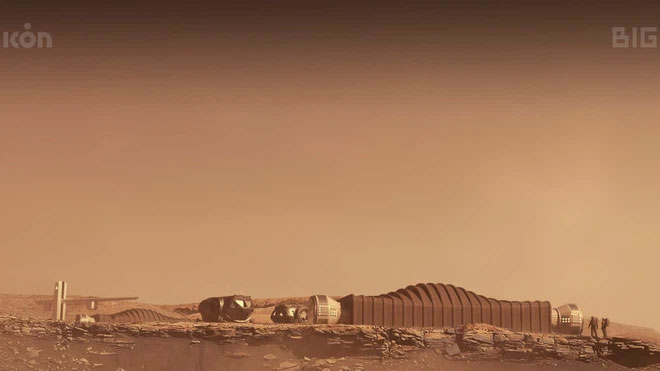NASA is looking for 4 people to live in an environment like Mars, with pay
If you think you have what it takes to live on Mars for a year, this is the adventure of a lifetime and your chance to make history.
If you've ever dreamed of living on Mars, this is your chance to make it come true. Because in the latest move, NASA is looking for brave volunteers to participate in a year-long simulated Mars mission, starting in the spring of 2025.
The mission, named CHAPEA 2 (Crew Health and Performance Exploration Similar), is part of three ground-based experiments, aimed at studying the effects of living and working on the Red Planet . The goal of this program is that it will help NASA make good preparations before sending humans to Mars in the 2030s.
To prepare for sending astronauts to Mars, NASA has begun accepting applications to live for a year at Mars Dune Alpha, in the amount of 4 people.
Mars Dune Alpha is a simulated Mars-like habitat , nearly 160 square meters wide , created by 3D printing technology and located inside a building at the Johnson Space Center in Houston.

Design concept photo of Mars Dune Alpha.
Paid volunteers will undertake a simulated Mars exploration mission, with "spacewalks", limited communication with family, and limited food and resources and must react to equipment failures.
NASA is planning three of these experiments with the first starting next fall. The food for the volunteers will be space-consuming fast food, and there are currently no plans for the lab to have any windows. Some crops will be grown, but not potatoes like in the movie 'The Martian' starring Matt Damon as an astronaut stranded on Mars.
But if you think you'll just eat, sleep and repeat that routine over and over again, that doesn't happen here. Crew volunteers must perform a variety of tasks, such as simulating spacewalks, operating robots, maintaining habitats, exercising, and growing crops. They will also have to deal with the psychological and social aspects of living in a small group of people in space for long periods of time.
Currently, NASA is looking for candidates who are US citizens or permanent residents, non-smokers, 30-55 years old and fluent in English. Participants must also have a master's degree in a STEM (Science, Technology, Engineering and Mathematics) field, or professional experience in equivalent fields. Of course, they must have a passion for adventure, and be willing to contribute to NASA's space exploration mission.
'We wanted to understand how humans functioned in that environment,' said the programme's chief scientist Grace Douglas . We're looking at real-life situations on Mars."

Illustration of people living on Mars.
Registration is open until April 2, 2024, on the CHAPEA website. The assignment is paid, but the exact amount has not been disclosed. Candidates must undergo a rigorous screening process, including medical and psychological evaluations, interviews and training.
NASA hopes the CHAPEA 2 mission will provide valuable insights into the human factors and technology needed for future exploration of Mars.
- NASA cooperates with Peru to implement a potato planting project in the Mars environment
- Selected 100 people to Mars, live and do not return
- NASA simulates humans living on Mars in the desert more than 50 degrees Celsius
- Living on the Moon or Mars better? Science has got the answer!
- The 17-year-old girl was trained by NASA to become the first person to set foot on Mars
- NASA studies human behavior in Mars-like environments
- Should humans abandon the Earth and find another planet to live on?
- Why hasn't NASA brought people to Mars?
- NASA announced a model for astronauts on Mars
- NASA's Mars team left Hawaii after months of quarantine
- List of terrible things when living on Mars
- More than 1000 people volunteered to live Mars
 Announced 3 houses on the Moon and Mars
Announced 3 houses on the Moon and Mars Science proves: Mars also knows 'deflated'
Science proves: Mars also knows 'deflated' Elon Musk announced the price for a Mars trip was 11.6 billion VND, free of charge
Elon Musk announced the price for a Mars trip was 11.6 billion VND, free of charge NASA discovered strange 'gate' on Mars, is the hiding place found?
NASA discovered strange 'gate' on Mars, is the hiding place found?